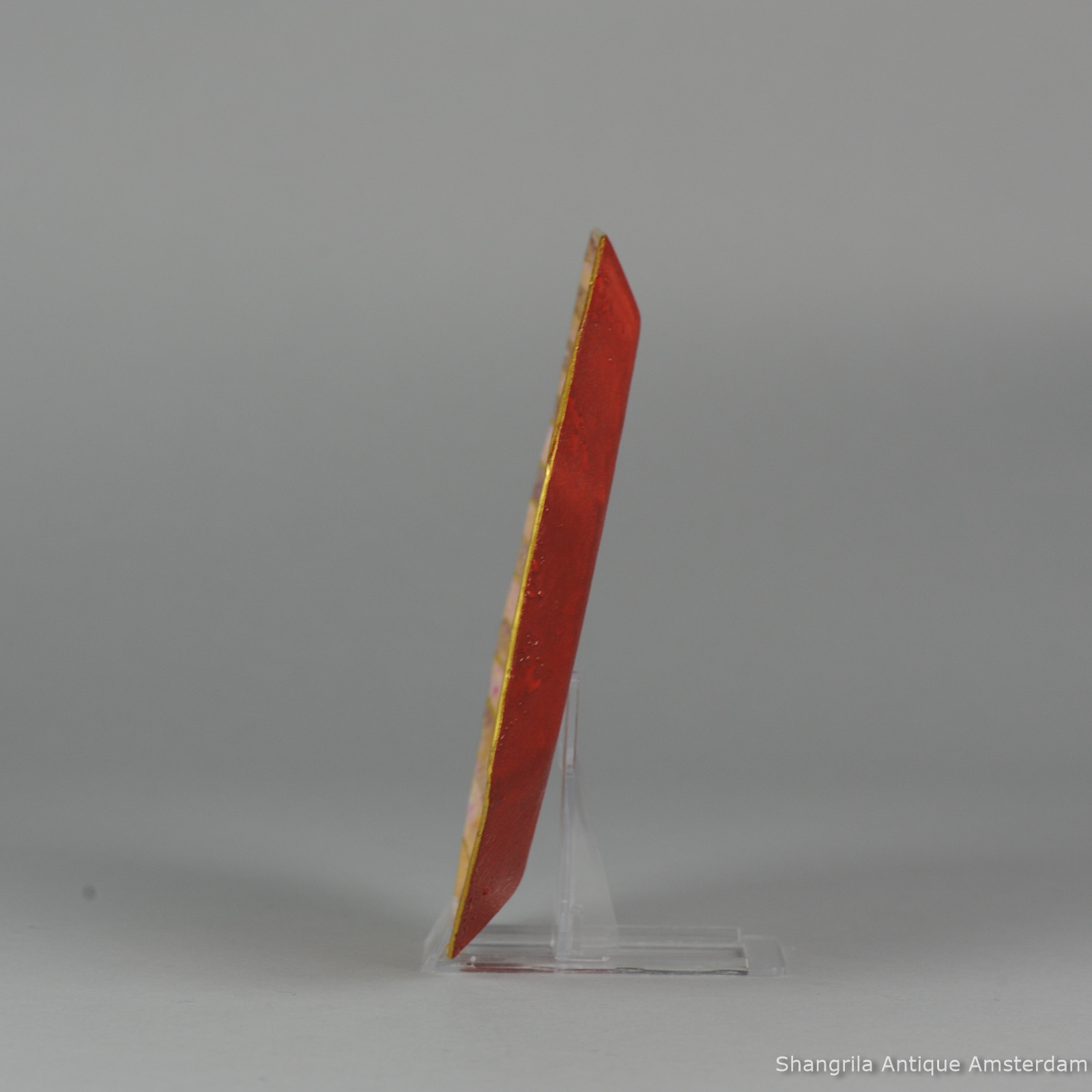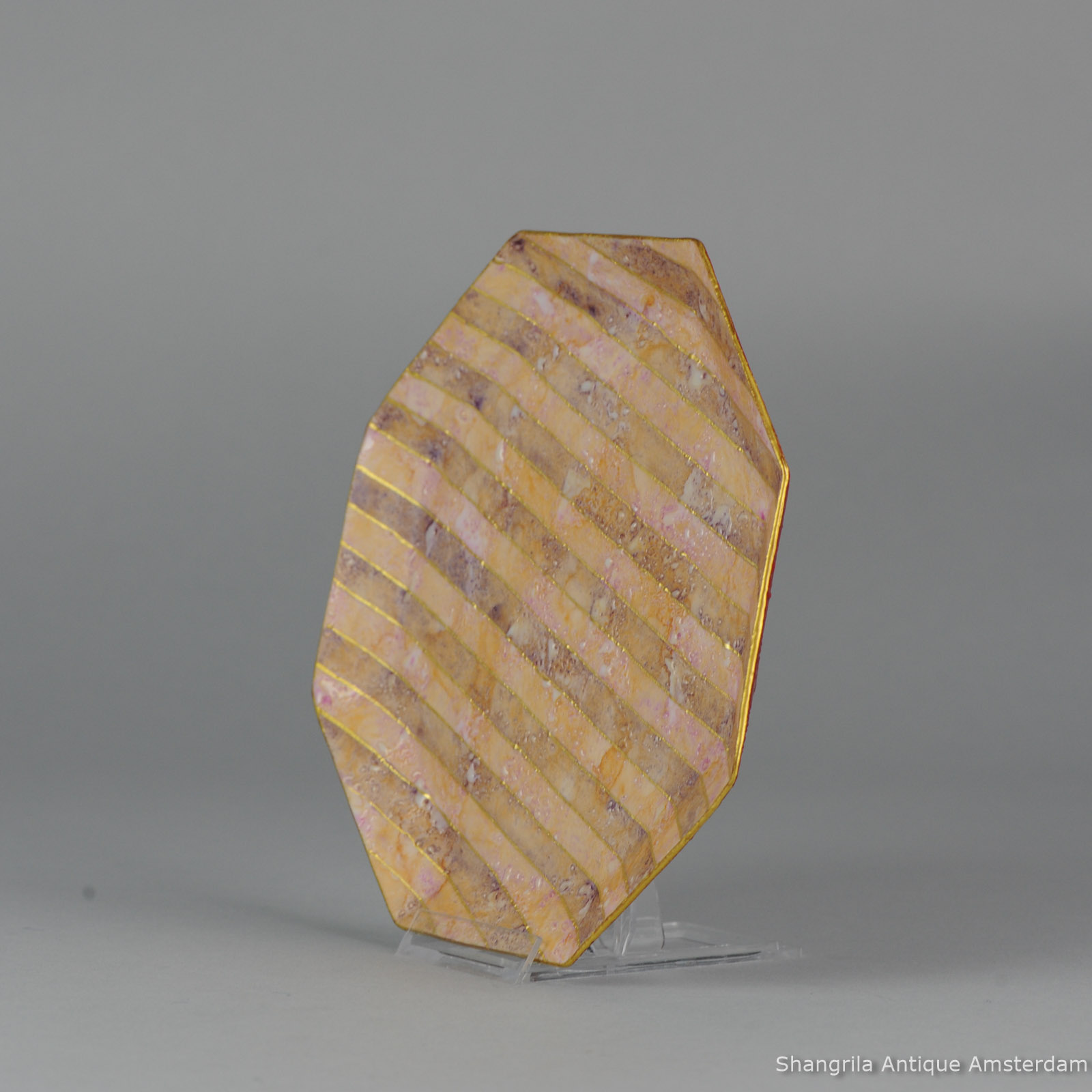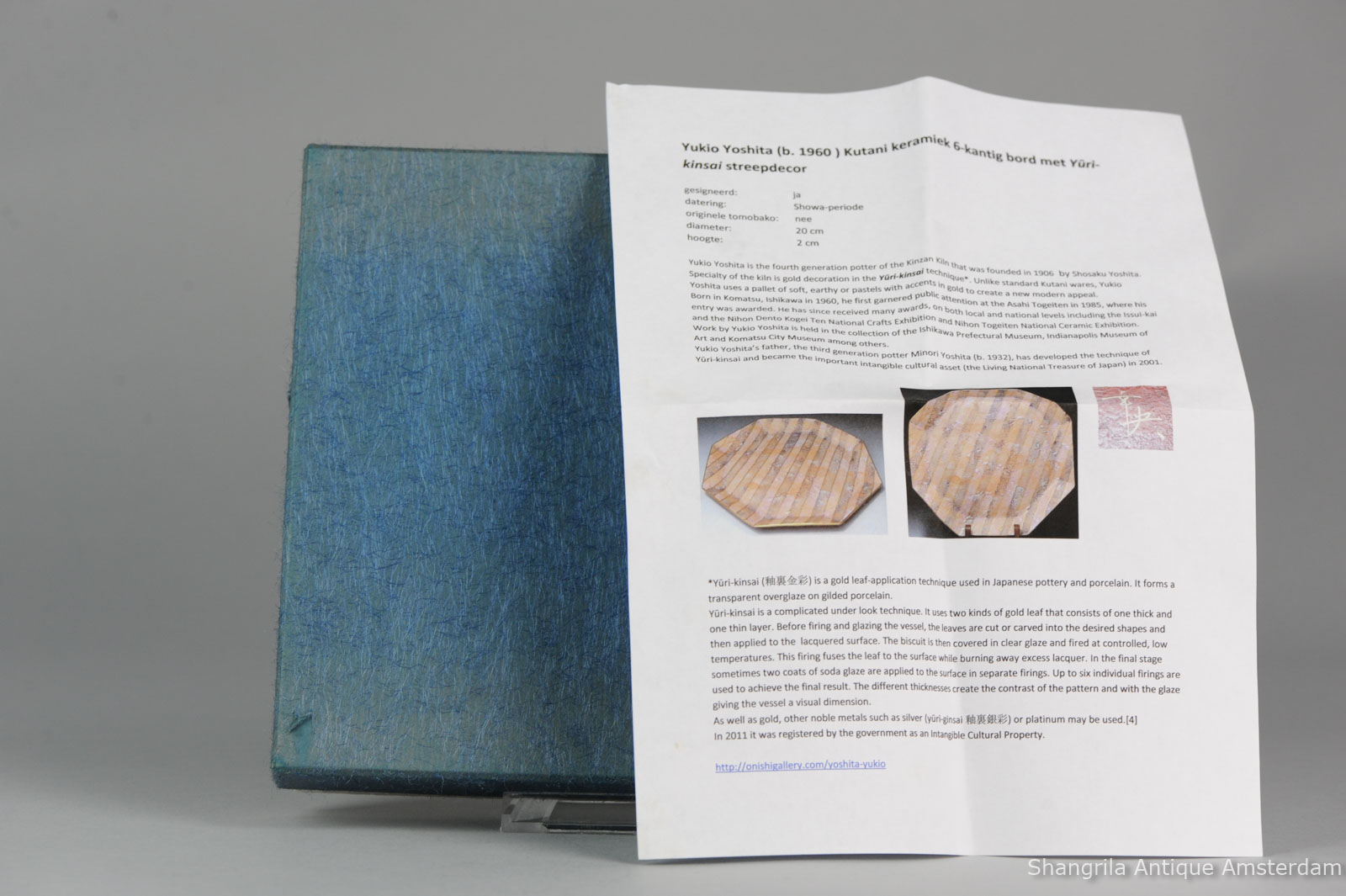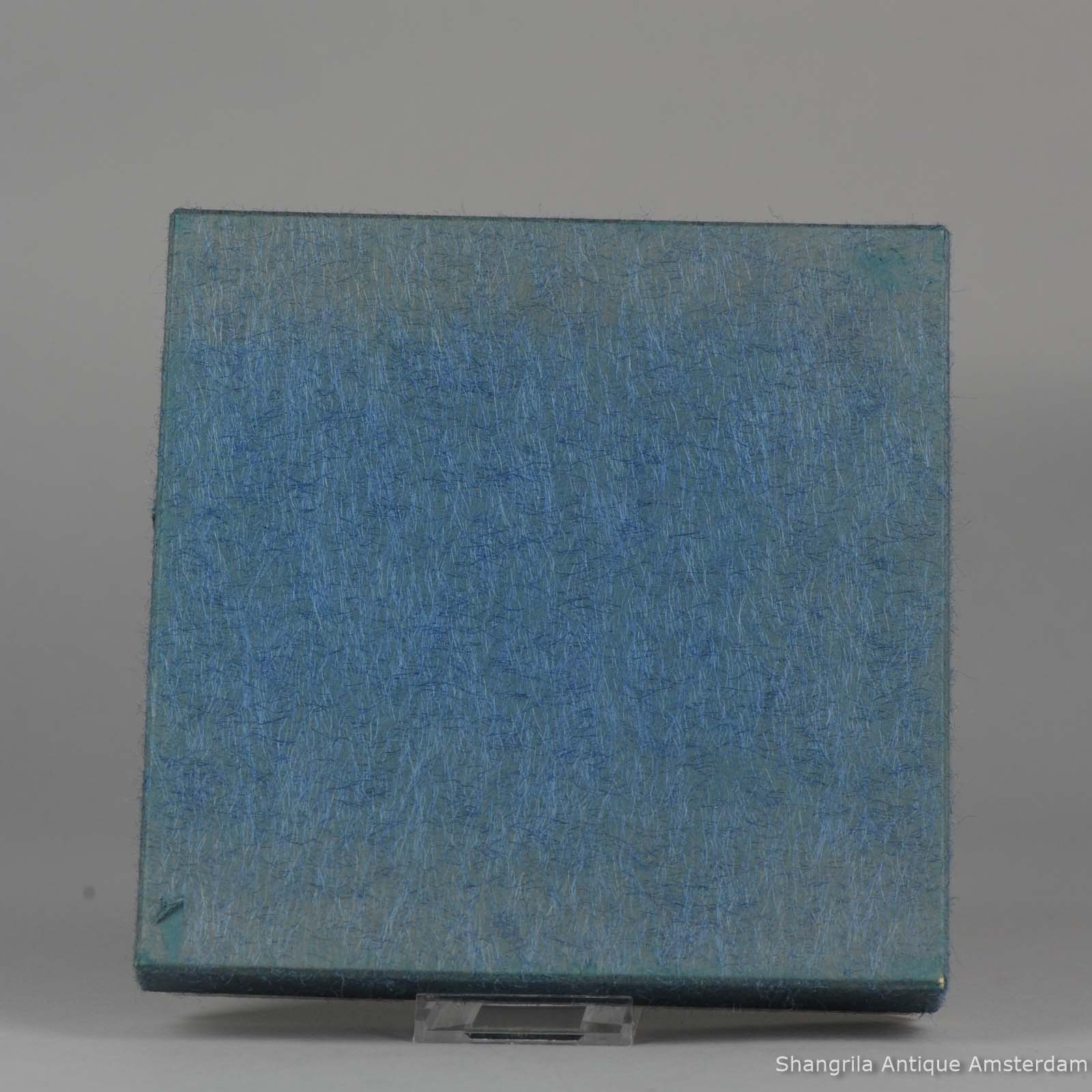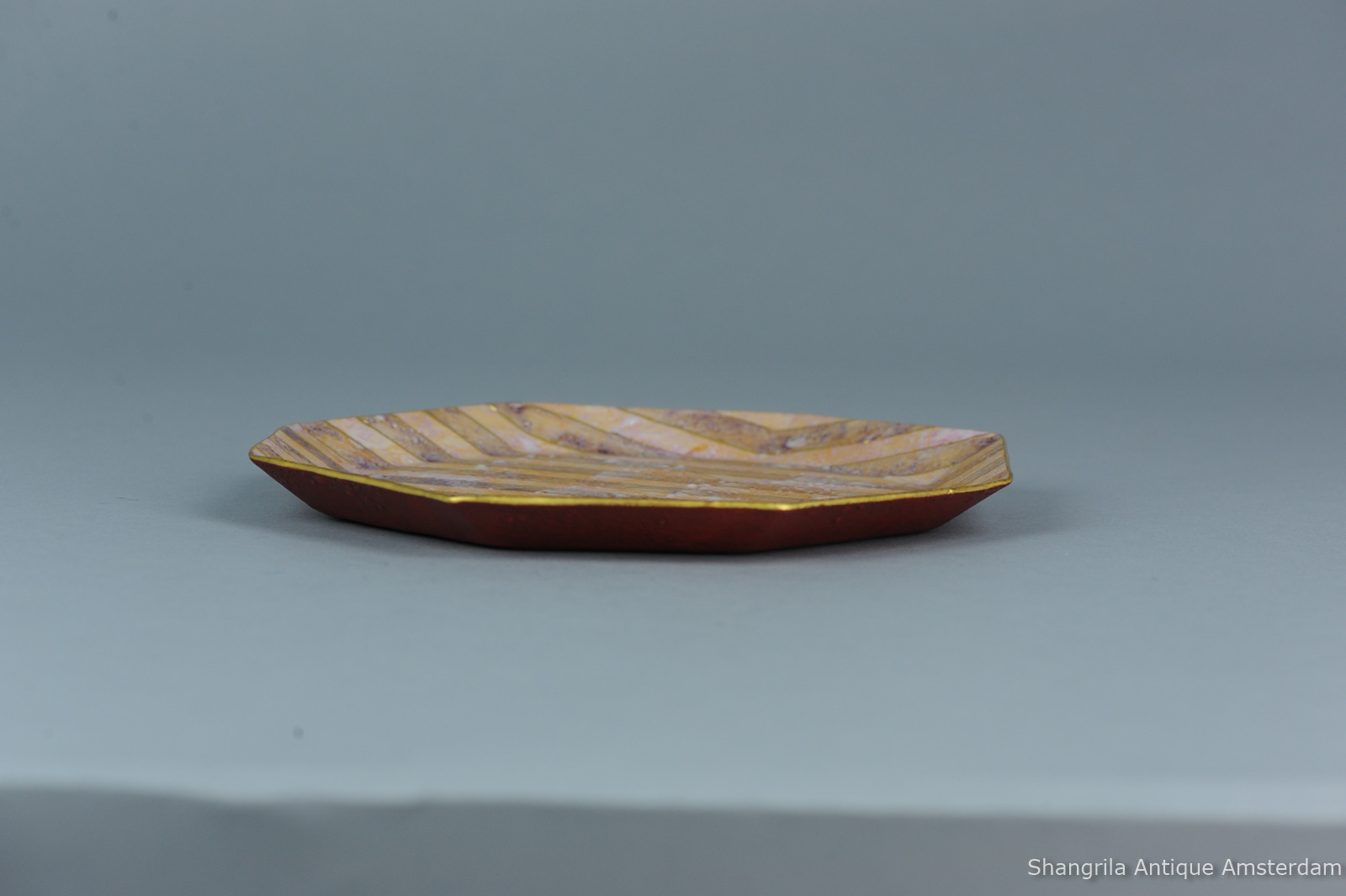20th c Yukio Yoshita (b. 1960) Yuri Kinsai Showa Period Japanese Porcelain Plate
Out of stock
Condition Report: Overall Condition Perfect. Size: 199mm
Born into the Yoshita family of porcelain artists and as the son of Yoshita Minori, a Living National Treasure, Yoshita Yukio forged an independent style in his works that echoes traditional Kutani over-glaze techniques of his native Kanazawa and at the same time reflective of his own aesthetic sensibilities. Yoshita’s expressions with colors such as the faded pastel shades that recall frescoes of the Italian Renaissance and poetic representations of color akin to watercolor drawings on porcelain surfaces, are his special achievements. His works are standouts amongst the bold-colored and smooth surfaces of traditional Kutani wares.
Yoshita applies pastel matte glazes to the white porcelain bodies of elegant vessels, often painted in overlapping or blurring abstract patterns. He also uses metallic over-glaze gold to highlight the designs. Yoshita’s works are housed in museums both in and outside of Japan, such as at the Ishikawa Prefectural Museum of Art, Kanazawa and the Indianapolis Museum of Art, Indiana.
Yūri-kinsai (釉裏金彩) is a gold leaf-application technique used in Japanese pottery and porcelain. It forms a transparent overglaze on gilded porcelain.[1]
Yūri-kinsai is a complicated under look technique. It uses two kinds of gold leaf that consists of one thick and one thin layer. Before firing and glazing the vessel, the leaves are cut or carved into the desired shapes and then applied to the lacquered surface. The leather is then covered in clear glaze and fired at controlled, low temperatures. This firing fuses the leaf to the surface while burning away excess lacquer. In the final stage sometimes two coats of soda glaze are applied to the surface in separate firings. Up to six individual firings are used to achieve the final result.[2] The different thicknesses create the contrast of the pattern and with the glaze giving the vessel a visual dimension.[3]
As well as gold, other noble metals such as silver (yūri-ginsai 釉裏銀彩) or platinum may be used.[4]
In 2011 it was registered by the government as an Intangible Cultural Property.[5]
http://www.japanpotterynet.com/en/user_data/artist103.php
Additional Information
| Weight | 25 kg |
|---|---|
| Type | |
| Primary Material | |
| Region of Origin | |
| Japan Dynasty Periode | Showa Periode (1926-1989) |
| Century | 19th century, 20th century |
| Condition Report | Overall Condition Perfect. Size: 199mm |
| Material | Porcelain & Pottery |




